Blending Instruction with Technology
Blending Instruction with Technology
A Blueprint for Teachers to Create Unique, Engaging, and Effective Learning Experiences
Michael Martin
Rowman & Littlefield
Lanham Boulder New York London
Published by Rowman & Littlefield
A wholly owned subsidiary of The Rowman & Littlefield Publishing Group, Inc.
4501 Forbes Boulevard, Suite 200, Lanham, Maryland 20706
www.rowman.com
Unit A, Whitacre Mews, 26-34 Stannary Street, London SE11 4AB
Copyright 2016 by Michael Martin
All rights reserved . No part of this book may be reproduced in any form or by any electronic or mechanical means, including information storage and retrieval systems, without written permission from the publisher, except by a reviewer who may quote passages in a review.
British Library Cataloguing in Publication Information Available
Library of Congress Cataloging-in-Publication Data
Names: Martin, Michael, 1974 author.
Title: Blending instruction with technology : a blueprint for teachers to create unique, engaging, and effective learning experiences / Michael Martin.
Description: Lanham : Rowman & Littlefield, [2016] | Includes bibliographical references and index.
Identifiers: LCCN 2016010399 (print) | LCCN 2016017153 (ebook) | ISBN 9781475826999 (cloth : alk. paper) | ISBN 9781475827002 (pbk. : alk. paper) | ISBN 9781475827019 (Electronic)
Subjects: LCSH: Blended learning. | Educational technology. | EducationEffect of technological innovations on.
Classification: LCC LB1028.5 .M325 2016 (print) | LCC LB1028.5 (ebook) | DDC 371.33dc23
LC record available at https://lccn.loc.gov/2016010399
 The paper used in this publication meets the minimum requirements of American National Standard for Information SciencesPermanence of Paper for Printed Library Materials, ANSI/NISO Z39.48-1992.
The paper used in this publication meets the minimum requirements of American National Standard for Information SciencesPermanence of Paper for Printed Library Materials, ANSI/NISO Z39.48-1992.
Printed in the United States of America
The dogmas of the quiet past are inadequate to the stormy present. The occasion is piled high with difficulty, and we must rise with the occasion. As our case is new, so we must think anew and act anew. We must disenthrall ourselves and then we shall save our country.
Abraham Lincoln
Preface
I t was one of those moments where every hair on your neck stands up. As an educator, it is the rare but surreal moment that justifies why we join the education profession. Riley, a fifth-grader, is standing in anticipation as he watches the teacher and a few of the high school students enter his fifth-grade room. Riley was born without a hand. He has spent his entire life with either only one hand or one hand and a prosthetic. As the teacher and students unveil the prosthetic hand they had designed and printed on a three-dimensional printer, Riley, ravaged with excitement and emotions, begins to run in place. It is one of those moments that would drive anybody with a heartbeat to tears.
It is truly amazing how, in 2014, a group of determined and well-intentioned high school students led by an amazing teacher can create a prosthetic hand. What is more, the hand is usable and due to the low cost (just under $30) the hand can be reprinted each year as Riley grows. Technology in the classroom can be such a powerful tool.
Therein lies the fundamental purpose of this book. Technology is and always will be a tool. Technology cannot and will not supersede the classroom instructor. That being said, a teacher alone, one without technology, is behind the eight ball. This is due to the great advances in technology as well as technologys affordable prices. Teaching and learning now go hand in hand with technology.
Sadly, not many educators truly understand what teaching with technology really means. I have been afforded the opportunity to witness many well-educated and good-intentioned teachers fall victim to technologys fatal flaws.
Flaw 1: Schools believe a good use of technology is to create a wireless infrastructure that would allow students to Bring Your Own Device (BYOD). Teachers then would allow students to use their devices to look up answers to questions the class did not know. This is an all too common strategy. Is this good teaching? Is this using technology to enhance education? In this case, isnt the device really only replacing a textbook? Instead of having students look up the answer in a textbook, the teacher allows the students to use their devices.
Flaw 2: I have seen too many educators preach they are teaching twenty-first-century skills. Please understand I fully believe that we need to not only teach twenty-first-century skills but our students should also be immersed in them.
So wheres the flaw here? Here is a list of some of the twenty-first-century skills our students may encounter:
- QR codes
- Doceri
- Reflector
- Socrative
- Prezi
- Animoto
- Poster Maker
- Glogster
- Educreations
- Voki
- GAFE (Google Apps for Education)
Does this look like a list of skills? More accurately, this is a list of web-based tools. Granted, these are some really unique and powerful web-based tools, but they are not skills. Far too many times I have witnessed well-intentioned and good teachers refer to these as twenty-first-century skills.
Let me make this point very clear; the list above includes tools to engage the twenty-first-century student, these are not twenty-first-century skills !
This is the message at the heart of this book. This book will serve as a beginning to understand how to enhance education. It will introduce educators to multiple web-based tools. It will also provide school leaders (principals, curriculum directors, instructional coaches, etc.) a framework with which to plan and initiate professional development that will meet educators where they are and move them forward.
The book will allow educators time to reflect on their teaching. It will provide examples on how to use these web-based tools in the classroom. You will be asked to pinpoint areas of weakness in your instruction method and then be provided multiple digital tools to improve these areas.
Again, it is important to note, this book will walk educators and school leaders through planning and using technology as a tool to enhance education. This book does not replace the teacher with technology. This book firmly places the teacher at the heart of education as the driver of high-quality classroom instruction.
To reach this end, you will be exposed to fundamental frameworks of cognitive development such as Blooms Revised Taxonomy and Webbs Depth of Knowledge. You will also be provided with examples of teachers using technology as a tool to provide learning opportunities that take advantage of both of these cognitive development theories.
Hopefully, the educators reading this book will not only be provided with insights on how to use the tool of technology as a way to facilitate good teaching, but they will also be inspired to continue to learn and grow. As educators increase their knowledge and confidence, the result will be engaged students and improved student achievement.
Acknowledgments
W here to start? There are so many people I owe so much to. Much of my current success is due to the many blessings that I have received from others along the way. Truly, if for some reason I have a different view of education than others, it is because I have stood on the shoulders of giants. To those Giants I say thank you. Thank you for your tutelage. Thank you for your patience. Thank you for your kindness. Thank you for your wisdom. Most importantly, thank you for believing in me, even when others didnt.
My Giants: Mrs. Piechocki, Mrs. McDiffitt, George Wechter, Glen Guttenberg, Mike Tracy, Dr. Hogan, Dr. Stein, John Hill, Dr. Theresa Schaffer, Greg Noftz, Roger Jury, Dr. Jim Metcalf, John Swese, Dr. Greg Gerrick, Dr. Ann Shelly, Dr. Harold Wilson, Dr. Howard Walters, all of Cohort X, Greg Nickoli, and Glenna Cannon.
Next page

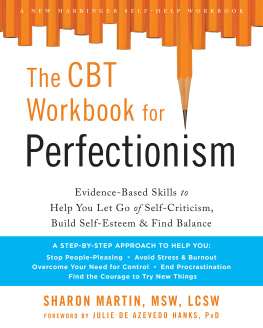
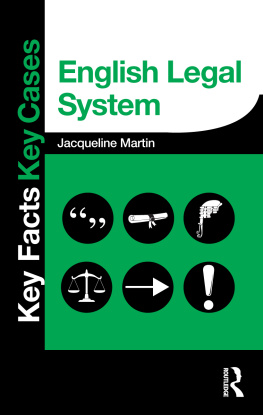

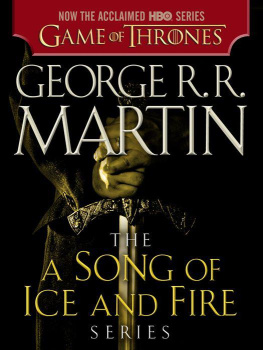
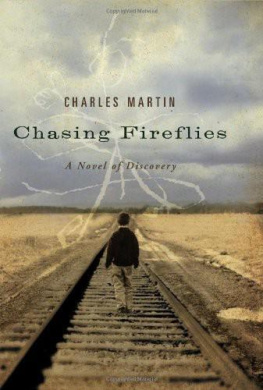

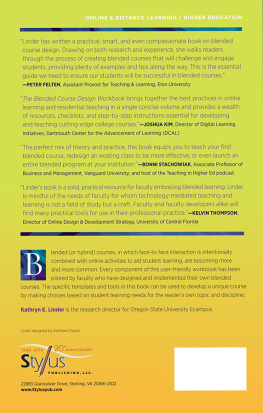
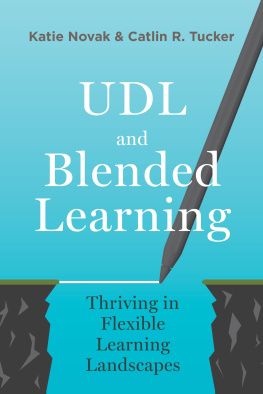
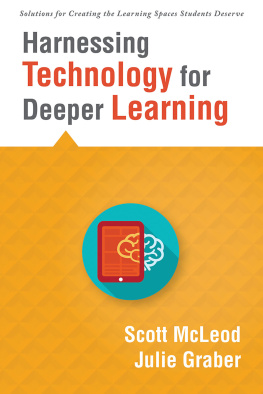



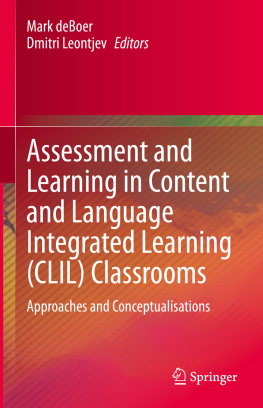
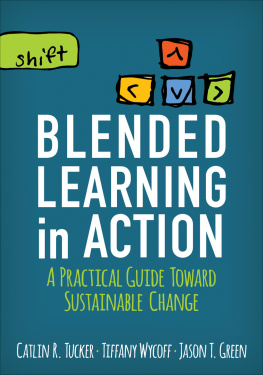
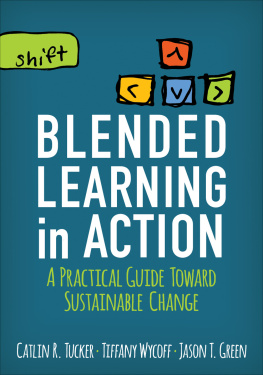

 The paper used in this publication meets the minimum requirements of American National Standard for Information SciencesPermanence of Paper for Printed Library Materials, ANSI/NISO Z39.48-1992.
The paper used in this publication meets the minimum requirements of American National Standard for Information SciencesPermanence of Paper for Printed Library Materials, ANSI/NISO Z39.48-1992.